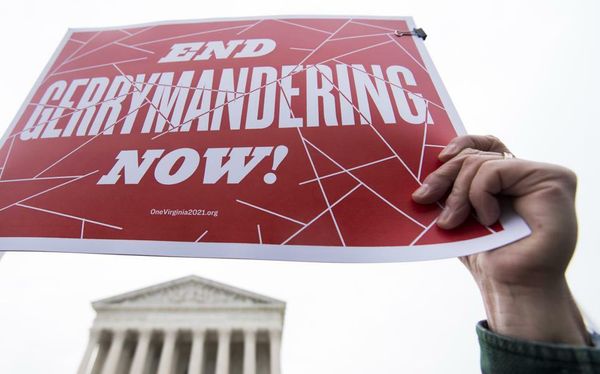PHILADELPHIA — The Pennsylvania Supreme Court on Wednesday took control of a high-stakes redistricting lawsuit and will now decide how the state’s congressional districts will be drawn for the next decade.
A lower court had been poised to select a new map from among 13 proposals this week because the normal redistricting process between the governor and state Legislature had broken down. Now the high court will instead make the decision, exercising its “extraordinary jurisdiction” power to take over any case.
That will likely speed up the selection of a final map, which was the stated goal of the plaintiffs who asked the Supreme Court to step in. The clock is ticking — there are less than four months until the May 17 primary — and uncertainty around district boundaries has kept candidates, voters and elections administrators in limbo.
The court’s decision is also likely to put it in partisan crosshairs once again.
Elected Democrats hold a 5-2 majority on the Supreme Court, which has drawn intense criticism from Republicans since its 2018 decision to overturn Pennsylvania’s congressional map as an unconstitutional partisan gerrymander. The court drew a new map. Since then, Republicans have continued to attack the court for decisions they see as partisan judicial overreach, including rulings in election-related cases in 2020.
Democrats have made no secret of their belief that the high court is more favorable to them than the Commonwealth Court, which has a Republican majority they often disagree with. (When the Commonwealth Court last week ruled the state’s mail-voting law unconstitutional, Philadelphia elections chief Lisa Deeley called it “probably one of the worst courts in the nation.”)
States redraw their congressional districts every decade to reflect population changes captured in the census. Those maps help shape political power and community representation, so politicians have long used the process to benefit themselves by gerrymandering the lines, or drawing them to unfairly benefit themselves and their party. When Republicans drew the congressional map in 2011, the districts were so precisely crafted to benefit the GOP that for years the same 13 districts voted for Republicans and the same 5 districts for Democrats — even as Pennsylvania’s evenly split voters sent Barack Obama and Donald Trump to the White House and Bob Casey and Pat Toomey to the Senate.
That map was the one the state Supreme Court overturned in 2018. This time, many observers had long believed redistricting would once again end up before the court.
They were right.
The usual redistricting process, which occurs through legislation, failed: The Republican-controlled state Legislature passed a congressional map that Gov. Tom Wolf, a Democrat, vetoed. Even as lawmakers passed the map, Senate Majority Leader Kim Ward, a Westmoreland Republican, told reporters she knew the governor would veto the map and it would end up in court.
Republicans didn’t work with Democratic lawmakers when they introduced a map and then amended it — without public scrutiny — and passed it. Meanwhile, Wolf refused to negotiate directly over the districts, instead putting out a set of general principles and criticizing Republican maps without releasing his own specific ideas for districts until shortly before the end of the process.
With redistricting breaking down, a group of Democratic voters and a group of math and science professors filed separate lawsuits that were later combined. Commonwealth Court Judge Patricia A. McCullough, elected as a Republican and considered one of the more conservative judges on the court, set a deadline of Sunday for a final map to come through the normal process.
In preparation for the likelihood there would be no map by that deadline, McCullough requested parties in the case submit maps last week, then solicited responses to those maps and held hearings Thursday and Friday. In the week’s flurry of activity — which continued Saturday — the various parties in the case sought to demonstrate to the court that their maps met constitutional requirements and explained why they should be chosen.
Those parties, including Wolf, Republican legislative leaders, Democratic lawmakers and good-government groups, submitted 13 maps to the court.
But one set of plaintiffs in the case, represented by national Democratic election lawyer Marc Elias, filed a request Saturday with the Supreme Court, asking it to take over the case directly and impose a map, bypassing the Commonwealth Court decision and appeals process.
The justices on Monday temporarily blocked McCullough from picking a map while they considered whether to take over the case. (On Tuesday, McCullough told the Supreme Court that she was prepared to select a map this week, if allowed.)
On Wednesday, the justices made their decision: The Pennsylvania Supreme Court will once again draw the state’s congressional map.
———










